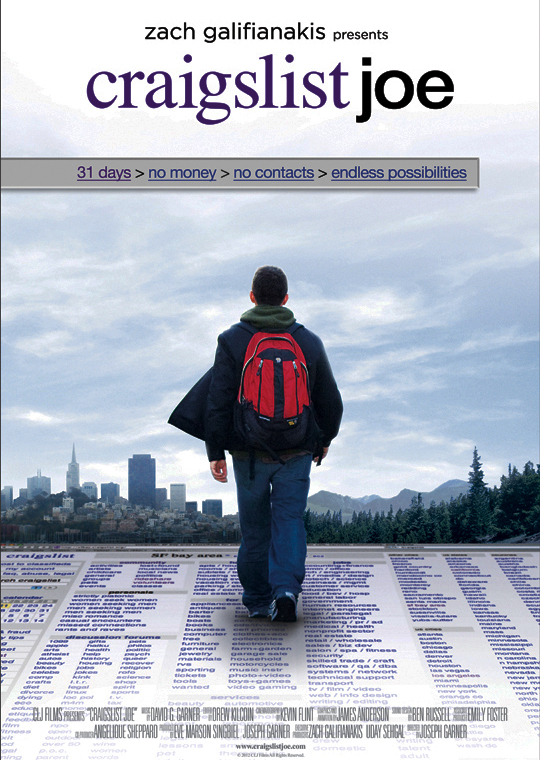For many people, Craigslist may bring images of ads seeking missed connections, postings for a yard sale, perverts or the next Craigslist killer. But for Joe Garner, the classifieds site is a place for kindness.
Ignoring the stigma of engaging with strangers on social media, “Craigslist Joe” director and subject Joseph Garner tracks his 31-day journey across the country in the documentary. Garner starts with only a cellphone, laptop, toothbrush and the clothes on his back.
His means for food, companionship and housing all come from ads posted on Craigslist. In the film, Garner asks the question: “Have we become so caught up in our own lives that we don’t notice life outside our bubble?”
The documentary is out to give a moral lesson like Morgan Spurlock’s “Super Size Me.” But instead of exploring the negative effects of the fast food industry, Garner attempts to discover a sense of community in the world through technology. Just like Spurlock, Garner’s body is tested as he lives off of small portions of food and water.
Garner does a good job of placing the audience right next to him by only filming with a single-camera. He even enlisted the help of a cinematographer through Craigslist, Kevin Flint, who also seems to add some protection when encountering some of the strangers Garner meets through ads.
The documentary nicely captures the kindness Garner was looking for through Craigslist users. The kindness of strangers takes Garner to Washington, New York, Louisiana, Nebraska, Illinois, California and many other states during his month-long trip that started in Los Angeles.
A man with a stuffed rooster in his car, a dominatrix with a couch to sleep on and a woman who prays with crystals with some extra food all give a helping hand to Garner during his journey across the states. Each lively character helps Garner with food, clothes and a place to stay without asking for anything in return.
The film manages to delve into issues the nation has faced in recent years such as Hurricane Katrina during a heartfelt moment in which Garner looks through a photo album left in a house that was affected by the storm. Garner also helps the audience see how some Muslim Americans were racially profiled after Sept. 11.
This is seen through Mohammed Al-Maly, the director of an after-school program for refugee children that Garner volunteers at, as he invites Garner to his home for dinner and even offers him clothing. Al-Maly’s father tells Garner that people on the streets would yell to his family, “Go back to your country!” but he remains positive and said he is an American citizen and will always defend America. Garner is overwhelmed with emotions and cries after hearing about the taunting Al-Maly’s family received after the tragic event.
Overall, Garner’s film brings a new perspective to the survival of a community within a nation that has faced so much in recent years as well as Garner’s survival by having faith in the goodwill of Americans.
““ Brittany Taylor
Email Taylor at btaylor1@media.ucla.edu.
